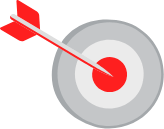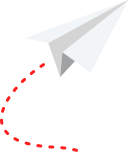Generating leads to keep sales growth is the primary goal of management teams across B2B companies. It can have a tremendous impact on revenue and is crucial for the company’s further development. Make sure you seize all opportunities to optimize your website and enhance your sales funnel to drive more relevant leads.
We’ve listed ten ways to strengthen your strategy and ensure your site becomes another source of sales for your company.
Table of Contents
Why lead generation is Important for B2B websites
B2B lead generation is one of the key activities for sales and marketing teams. You don’t want to risk having an empty sales pipeline that directly impacts your bottom line. Your website is an excellent way for potential clients to get familiar with your services and their benefits, see your expertise, and connect with potential leads. However, the website needs to be appropriately optimized to drive relevant leads who are ready to take the next steps with your company.
10 Ways to Optimize B2B Websites for Lead Generation
Business-to-business marketing has a noticeably different approach toward business-to-customer. B2B sales have a lower volume but are oriented on long-term relationships with other businesses, that is why you should know how to optimize a website for B2B leads.
1. Build backlinks to gain trust from other websites
Backlinks are links that lead from one website to another. They act as proof for Google that your website has authority: having relevant and top-quality links leading to your website tells Google that your content can be trusted. There are many ways to build qualitative links: create content that others find valuable, write guest posts, and make infographics that others can share. The crucial thing here is to understand the value of high-quality content — that’s what will create a demand for your pieces, which will make others share them. You can also partner with a Relationship-based Link Building Agency that focuses on earning placements through personalized outreach and relationship building, not automated tactics.
To get the most out of backlink building, start with evaluating your backlink profile. Check how many backlinks you have, along with their quality and distribution. You should do this type of analysis every once in a while to see how your backlink strategy is performing. Tools, like the Website Backlink Checker by NinjaReports, are perfect for such an evaluation: you can check backlink profiles, see a backlink history, and find out who’s linking to you. The tool also lets you look at competitors’ profiles, which can give you fresh ideas for your link-building strategy and reveal guest posting opportunities.
2. Optimize the website’s loading time
It is impossible to retain visitors and get them interested in your product if they cannot reach the website and stay there without any issues. Loading time is an extremely valuable metric — it reduces bounce rate, increases engagement, and boosts search engine rankings if well-optimized. The speed of the web page depends on the number of images/videos/animations on it, the quality of plugins, and coding scripts. You can use services such as PageSpeed Insights, GTmetrix, or Pingdom to define your website speed and see whether it needs improvements — type in your link and wait for a few seconds to get the result. You will get the first recommendations directly on the page:

While improving your loading time, check if your images are optimized, reduce redirects, set up browser caching, and eliminate unnecessary plugins.
3. Target B2B leads with high-quality content
One of the essential steps you should take to optimize a B2B website is to create relevant, high-quality content for your target audience. Your main goal here is to share information that potential customers will find valuable at every stage of the journey that should ultimately help them decide to purchase.
You want to have different types of content to attract potential clients at various stages of the buyer’s journey. Thanks to this strategy, you will get hot leads ready to convert and grow your lead generation approach.
Blogs, case studies, and review articles work best for B2B content. Perform keyword research before building your blog topics and find out user intent — this way, you’ll make sure that readers find exactly what they are looking for.
Nicely designed and written case studies will show your expertise in a non-boring way: most businesses will look to those when deciding on a partnership. Review articles and a knowledge base will also add value to the B2B website. Share content on relevant topics in a structured way to get users’ attention.

4. Personalize your CTAs
Your customers get to the website. They go through the pages, becoming more and more interested in your services. More touch points with your business may be needed before they make a decision on a purchase or partnership, but you’ve got their attention. How do they know what to do next? That’s exactly where the call to action (CTA) comes into play.
A call to action is an important part of website optimization that helps potential clients pass through the sales funnel. A CTA is simply an appeal to viewers about the next step they are supposed to take. It can be any action, like registering for an event, buying a service, or signing up for the newsletter.
The call to action may differ depending on the type of page. Blogs should encourage readers to discover the service as it may be their first touch with the brand, homepages motivate them to discover more and stay on the page longer, and contact pages should make it clear for visitors how they can (and should) easily get in touch.
![[call-to-action-on-the-B2B-website-homepage]](https://www.eworldtrade.com/blog/wp-content/uploads/2023/02/call-to-action-on-the-B2B-website-homepage.jpg)
5. Show your credibility in B2B services
If you want to get B2B leads through your website, potential clients need to know that you can be trusted. Show what sets you apart from the competitors and prove your expertise. Add sections with mentions of you in the press and any relevant certifications or awards. Another powerful way to share your expertise is through testimonials — embed them in your webpage content, make video content out of client feedback and place them on the website, so they’re easily reached.
Moreover, share your knowledge through the content. While sharing your company’s history in the ‘about us’ section, add how many years you have been in business. Show the expertise of your team by sharing their experiences, adding pictures, or sharing their stories. Make it visible who you partner with, adding a separate section (especially if you’ve worked with big names in the industry).

6. Test live chat services
Live chats are one way for lead generation on B2B websites that bring quick results. Not all clients have time to scroll and go through the sales funnel — they want to talk to a person, ask questions, and get a reply as quickly as possible. They may also just need a few clarifications before making a decision and do not want to wait too long for an answer.
Another benefit of live chat is having a time advantage. While potential clients wait for responses from other companies, you can use the live chat to promptly answer all their questions and close them as clients. Consider integrating the insights gained from a lead nurturing workshop to further enhance your live chat interactions, ensuring a more personalized and effective engagement strategy.
![[example-of-live-chat-bot-on-B2B-website]](https://www.eworldtrade.com/blog/wp-content/uploads/2023/02/example-of-live-chat-bot-on-B2B-website.jpg)
7. Integrate social networks into your B2B website
Embed your social networks into the B2B website: it will add credibility to your brand. If visitors get interested in your site, they have a chance to dive deeper and connect with you on social media. As you know, social media is the best place to build meaningful connections with the audience and grow loyalty. Unlike B2C, the B2B strategy for social media differs — it requires a more focused and thorough strategy to build a long-lasting relationship with business owners. Even if some users are not ready to make a purchase, they can still become a part of the sales funnel by subscribing to your social media and engaging with your content further. Sometimes you need a better Facebook presence to make your audience stare at your product as Facebook gives a valid identity to your product & for that, you need to schedule Facebook group posts about your product to generate a great B2B lead. Along with that, you can also embed social media widget on website to reflect the best impression of your business to your clients.
8. Optimize landing pages for PPC campaigns
Specialized landing pages usually have higher conversion rates compared to website pages. That’s why you should pay attention to their proper optimization.
When creating PPC campaigns, there are a few tricks you can use for B2B lead generation. Your landing page should have a clear proposal, CTA, and headline that are aligned throughout the page. Users will not be spending much time on your page, so make sure they get the most out of what they see. Visuals are also important: think about implementing infographics or videos tailored to the specific campaign. If your campaign’s goal is to highlight your company’s milestones, consider making timeline infographics. A well-designed infographic will make your website visitors learn more about your business. For businesses aiming to optimize their B2B marketing strategies, integrating a comprehensive tool for monitoring PPC campaigns can be immensely beneficial. Utilizing Octoboard, an all-in-one PPC analytics software, enables companies to manage multi-channel advertising data efficiently. This kind of integration ensures that every marketing dollar is accounted for and offers insights on how to leverage existing campaigns for better lead generation outcomes.
9. Use personalized intent popups to build your email list
Exit intent popups show up just before a user plans to close the window. The popup has the intention of getting the user to stay longer, sharing an interesting offer. However, you need to be careful not to annoy your visitors with popups. For this purpose, let the visitors fulfill their primary intents. And then display the popup relevant to the reader. You can make a connection by showing a popup related to the content the user is discovering or referring to a place where the visitor came from.

10. Add informative header and footer elements
The header is one of the first things your customers see when they reach the website. It is located at the top of the page and usually contains the main navigational links, logo, search boxes, carts, and other vital elements. You can also place there a promo bar or other announcements for your potential B2B clients. The footer is also important as it lets interested clients easily get in touch with your business or discover more about it. Both elements need to be informative and tailored specifically to your target audience. While the header provides easy navigation and instant access to the main website’s pages, the footer appears at the bottom of the page and contains contact information, privacy policies, social media icons, or other access links.

Wrapping Up
Knowing how to generate leads from website visitors gives you the power to use design, content, and promotion to your advantage. Enhanced B2B SEO strategy and a well-optimized site will attract the target audience. Take the steps we’ve discussed while creating or optimizing your B2B website and make them a part of your sales strategy, and the results will not make you wait.




